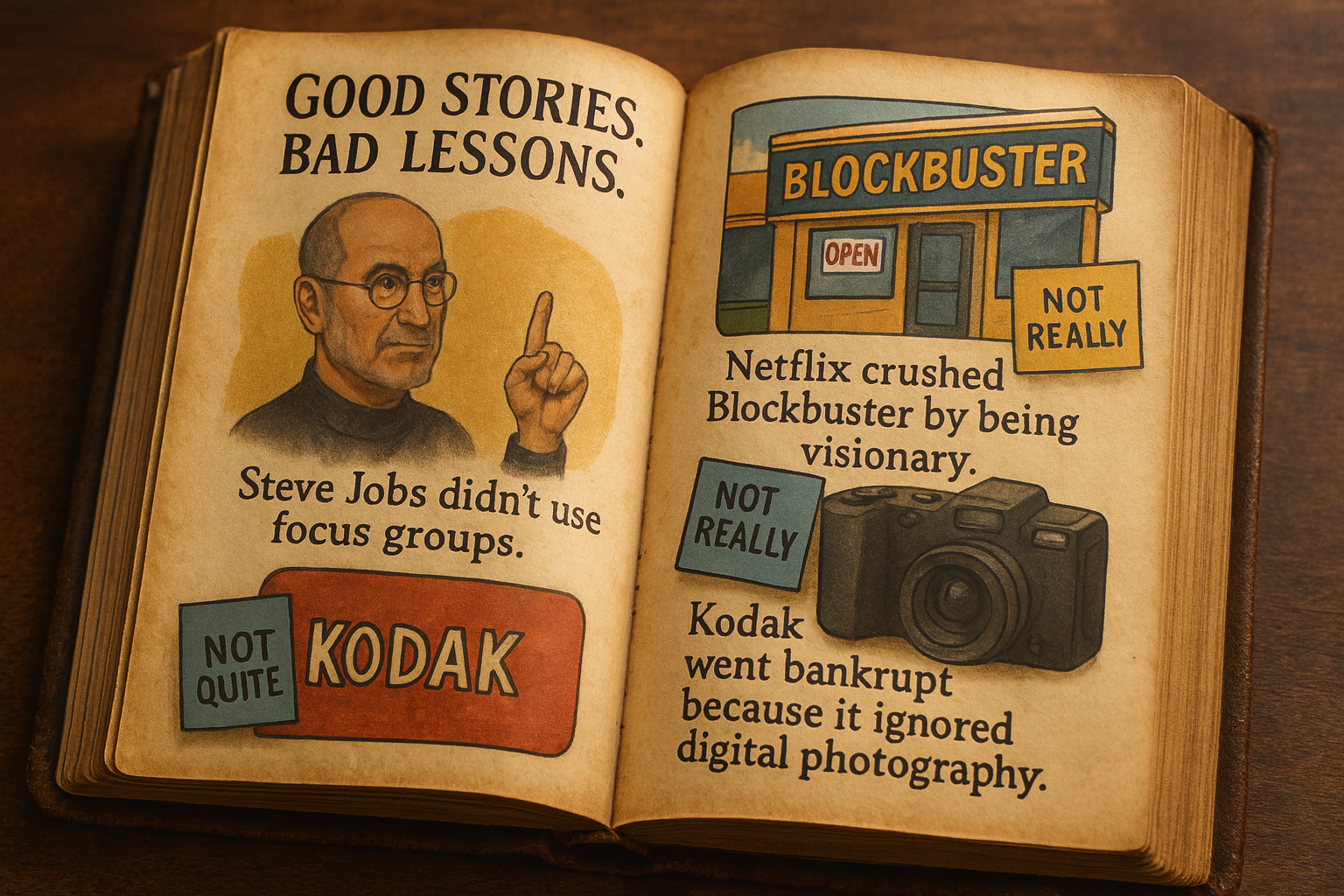Good Stories. Bad Lessons.
Scroll LinkedIn long enough and you’ll see the usual suspects:
Posts claiming Steve Jobs didn’t believe in market research.
That Netflix beat Blockbuster because they had more vision.
That Kodak went bankrupt because it ignored digital photography.
They make for great click bait. Visionaries as heroes, analysts as villains. The punchline is always the same: one bold idea is all it takes. What’s missing is the part that actually determines who wins — execution.
Let’s take them one at a time.
“Steve Jobs didn’t use focus groups.”
Jobs believed customers couldn’t design a product they hadn’t seen before. But he didn’t operate in a vacuum. Apple built products through constant prototyping, usability testing, and close observation of how people interacted with technology. The insight came from watching behavior, not handing the design process over to a survey.
“Netflix crushed Blockbuster by being visionary.”
Blockbuster ran a direct competitor to Netflix — Total Access — and considered buying them in 2000. The problem wasn’t a lack of vision. They were carrying nearly $1 billion in debt (Wired), fighting internal turf wars, and too slow to execute on the opportunity in front of them.
“Kodak went bankrupt because it ignored digital photography.”
Kodak invented the first digital camera in 1975 (Forbes). Their downfall came from protecting the film business instead of going all-in on digital. As Harvard Business Review points out, the issue wasn’t the technology—it was the failure to manage the transition at speed.
These myths stick because they’re simple and dramatic. They make innovation look like a single moment of genius. But big wins usually come from teams who can take a good idea and grind it into reality.
Execution takes clarity, alignment, and commitment. It means knowing when to leap and when to test. It means building the conditions for people to deliver, and clearing the roadblocks when they can’t.
The best leaders keep their eyes on the unglamorous work: clear roles, short feedback loops, visible metrics, teams with the resources and authority to act.
A brilliant idea without that is just a hallucination.
Imagination might get the headlines.
But execution pays the bills.

